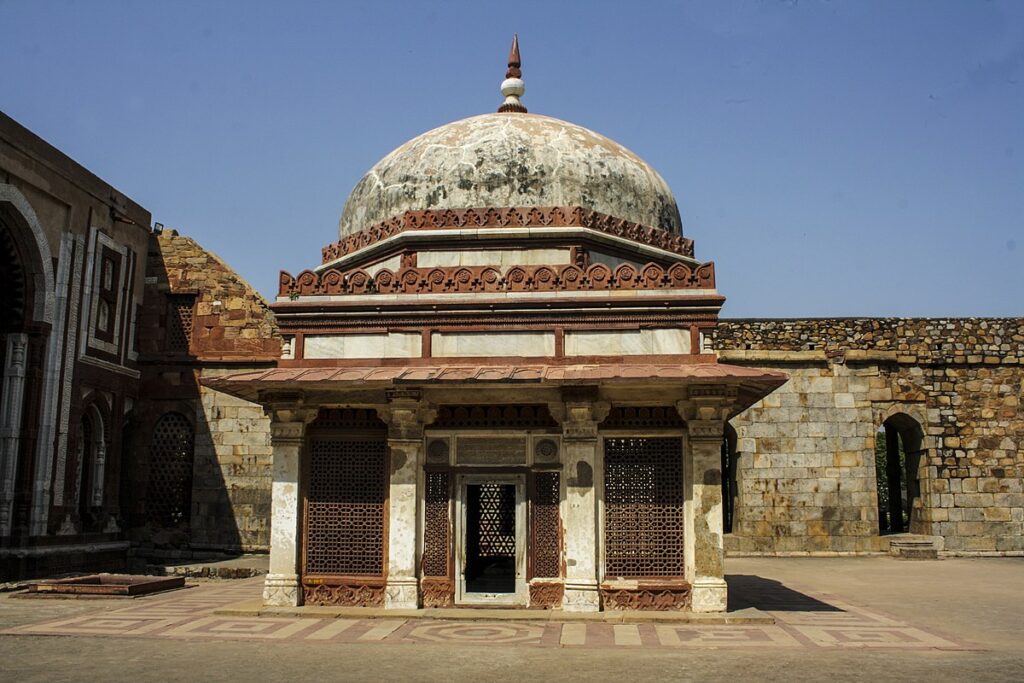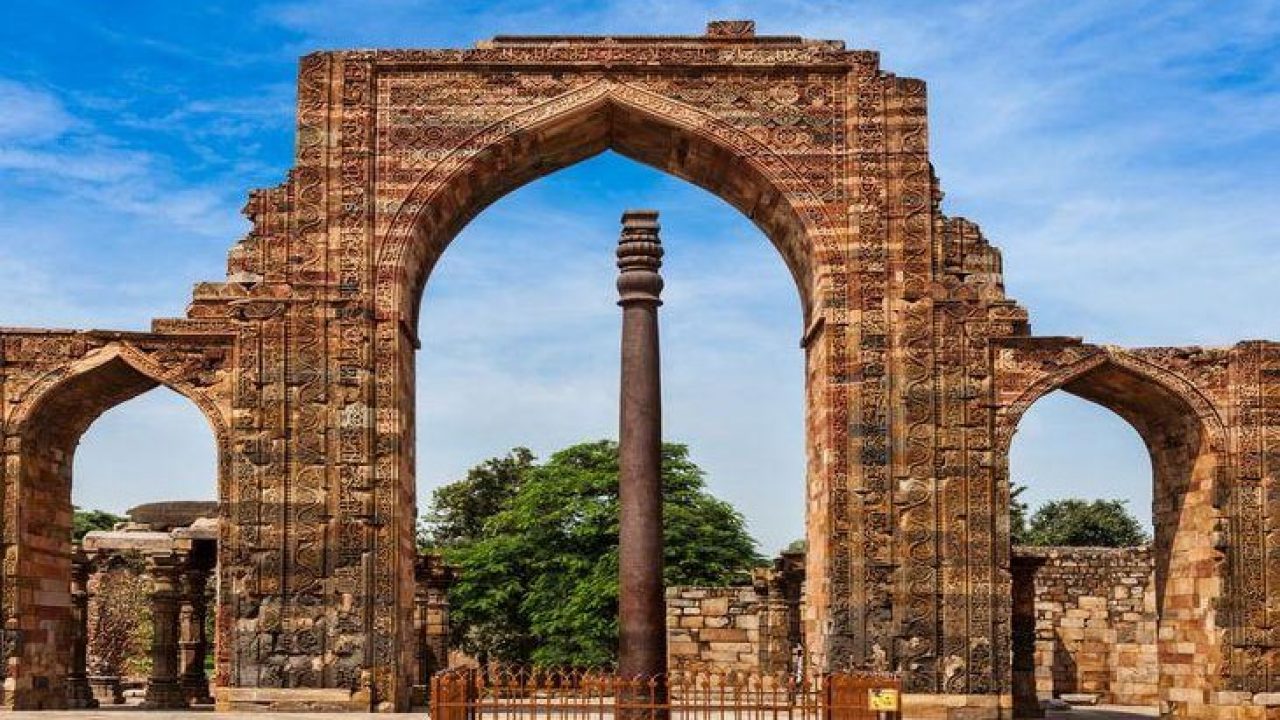We’re all fans of the towering Qutub Minar that stands as the world’s tallest brick minaret at almost 73 metres. But the enclosure in which the Qutub Minar stands also houses several other structures which are of historical and archaeological importance. Dating between the 11th to 14th century, many important buildings dot the site of Delhi’s oldest fortified city, Lal Kot.
1. Alai Darwaza

Made in red sandstone and marble, the Alai Darwaza is the southern gateway to the Quwwat-ul-Islam mosque. It was made by Alauddin Khilji of the Khilji dynasty, who intended to build to four gates and extend the mosque on all four sides, but died after the construction of the first gate only. The entire gateway is carved in geometrical patterns and inscriptions.
2. Tomb of Imam Zamin

The striking tomb was built by the Imam himself, who had migrated to India during the reign of Sikander Lodi. Originally known as Muhammad Ali, the Imam apparently discharged religious duties in the Quwwat-ul-Islam mosque. Located east of the Alai Darwaza, the dome is decorated in marble and the name of Zamin is written in Naksh script over the entrance doorway.
3. Alai Minar

Alauddin Khilji also dreamed of building a minar twice as tall as the Qutub Minar to commemorate his victory over the Deccan regions. However, after he died in 1316, the project was left unfinished and only a single storey remains erected opposite the Qutub Minar. Even in its ill-fate, it speaks of the might and ambition of the Khilji King.
4. The Iron Pillar

Resisting corrosion for the past 1,600 years, the iron pillar in the courtyard of Quwwat-ul-Islam mosque is one of Delhi’s most famous heritage attractions. Dating back to the 4th century, the pillar also bears an inscription from written in Brahmi, that states that the pillar was installed by Chandragupta II, and is dedicated to Lord Vishnu. It is composed of pure wrought iron and a high quantity of phosphorus, and therefore resists corrosion.
5. Iltutmish’s Tomb

The second ruler of the slave dynasty, Iltutmish is famous for completing the construction of the Qutub Minar. He himself commissioned his tomb, which was built in 1235. The interiors are carved with Arabic instructions and intricate geometrical patterns, while the exterior remains stony and without decoration. It was one of the first tombs to be built in the city.




